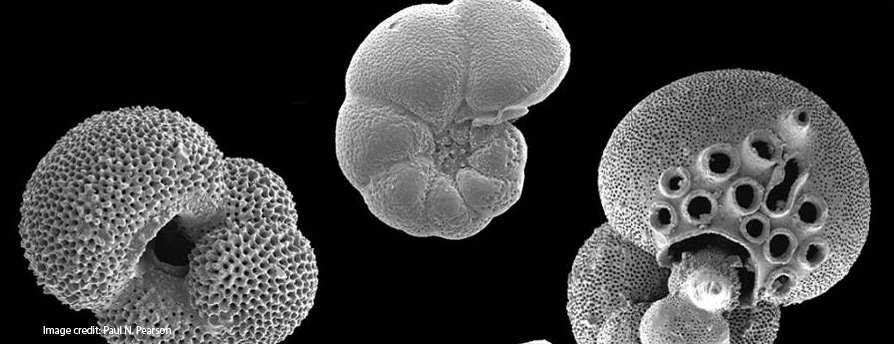C-FORCE is a multi-institutional NERC-NSFGEO Large Grant aimed at better understanding global carbon cycle feedbacks in a warm world through studying the PETM – the Paleocene-Eocene Thermal Maximum, arguably one of the closest analogues to anthropogenic climate change in the recent geological record.
The dominant driver of anthropogenic global warming is the increasing amount of the greenhouse gas carbon dioxide in the atmosphere. One of the biggest uncertainties about future climate change is how the natural carbon cycle will respond to (or 'feed back' on) our warming planet. It is possible, for example, that if global warming exceeds a threshold, permafrost and methane ice stored at the seafloor will melt rapidly, adding further greenhouse gases to the atmosphere and accelerating the warming. It is very difficult to predict whether 'tipping point' behaviour like this will occur in the global carbon cycle.
C-FORCE will measure how the global carbon cycle responded during a past period of global warming that was driven by emissions of carbon-based greenhouse gases to the atmosphere. The Paleocene-Eocene Thermal Maximum (PETM) is the largest natural climate change event of the last 65 million years, and the closest natural comparator to the anthropocene. During the PETM, initial global warming of 4-5 degrees Celsius over a few thousand years was partially driven by carbon emissions from an unusually massive episode of volcanism, and the climate then gradually recovered to its pre-existing state over more than 100 thousand years. C-FORCE will use a novel geochemical model of the global carbon cycle to compare the carbon supplied by volcanism with the total PETM carbon budget; the difference between these two budgets can be attributed to carbon cycle feedbacks.
To achieve this we will make new high-resolution estimates of the rate at which volcanism supplied carbon to the atmosphere throughout the PETM by measuring the processes that generated the magma. We will calculate the total budget of carbon emissions to the atmosphere that caused the climate change by generating new high-resolution records of ocean acidification. Our carbon cycle modelling will allow the scientists who make these two sets of measurements to interface effectively to solve the net global carbon cycle feedback problem for the first time. Furthermore, because Earth's carbon reservoirs differ in isotopic composition, we can fingerprint which reservoirs most likely acted as carbon sources or sinks over the course of the PETM. Thus C-FORCE will determine how the global carbon cycle evolved throughout the PETM, and show whether or not tipping point behaviour occurred.
Understanding how Earth's carbon reservoirs respond to global warming is crucial for predicting atmospheric carbon dioxide concentrations and climate change long into the future. Ultimately, an improved understanding of the carbon cycle affects future carbon budgets to limit global warming to 1.5 or 2 degrees Celcius and is therefore necessary for shaping mitigation targets and government policy.
CFORCE is led by Sarah Greene and Steve Jones at the University of Birmingham and involves researchers from the University of Bristol and Nottingham in the UK and University of California Riverside and University of California Santa Cruz in the US.







